Just to give you simple idea / direction
Below is for BigQuery Standard SQL
#standardSQL
SELECT
Date_of_action_first_taken,
ROUND(100 * later_1_day / Visits) AS later_1_day,
ROUND(100 * later_2_days / Visits) AS later_2_days,
ROUND(100 * later_3_days / Visits) AS later_3_days
FROM `OutputFromQuery`
You can test it with below dummy data from your question
#standardSQL
WITH `OutputFromQuery` AS (
SELECT '01.07.17' AS Date_of_action_first_taken, 1000 AS Visits, 800 AS later_1_day, 400 AS later_2_days, 300 AS later_3_days UNION ALL
SELECT '02.07.17', 1000, 860, 780, 860 UNION ALL
SELECT '29.07.17', 1000, 780, 120, 0 UNION ALL
SELECT '30.07.17', 1000, 710, 0, 0
)
SELECT
Date_of_action_first_taken,
ROUND(100 * later_1_day / Visits) AS later_1_day,
ROUND(100 * later_2_days / Visits) AS later_2_days,
ROUND(100 * later_3_days / Visits) AS later_3_days
FROM `OutputFromQuery`
The OutputFromQuery data is as below:
Date_of_action_first_taken Visits later_1_day later_2_days later_3_days
01.07.17 1000 800 400 300
02.07.17 1000 860 780 860
29.07.17 1000 780 120 0
30.07.17 1000 710 0 0
and the final output is:
Date_of_action_first_taken later_1_day later_2_days later_3_days
01.07.17 80.0 40.0 30.0
02.07.17 90.0 78.0 86.0
29.07.17 80.0 12.0 0.0
30.07.17 70.0 0.0 0.0

